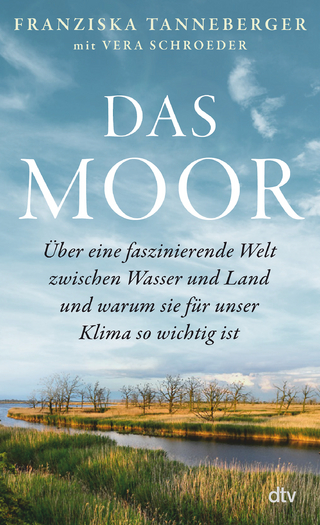
Innovation Ecosystems
ISTE Ltd and John Wiley & Sons Inc (Verlag)
978-1-78630-700-2 (ISBN)
Michel Saloff-Coste is the Director of Foresight at the Université Catholique de Lille (UCL), France, and a consultant to public and private organizations. His research focuses on futures studies, as well as technological, economic, social and ecological challenges of the contemporary world.
Foreword xi
Preface xv
Acknowledgments xxvii
Introduction xxix
Chapter 1 Looking Backwards To Look Forwards: Why a Change of Civilization? 1
1.1 What is a civilization? 1
1.2 The great waves of civilization in history 1
1.2.1 The notion of dominant activity 2
1.2.2 The characteristic domains of each era 3
1.2.3 The evolution grid 4
1.2.4 The era of creation and communication 10
1.3 Considerations on the evolution of civilizations 18
1.3.1 An exponential evolution 18
1.3.2 From mass duplication to customized production 21
1.3.3 Questions around the creation–communication era 22
1.3.4 Evolution and fragmentation of value systems and representations of the world 25
1.3.5 The couple as a matrix of societal transformations 29
1.3.6 The alternative of blocking or fleeing 31
1.3.7 Moving towards the future 32
Chapter 2 Creation and Communication as the Basis of the Civilization of the Future 35
2.1 The value of otherness 35
2.2 The creative strategy 40
2.3 Personal development, knowing how to create and communicate around our vocation: the mutation of professions 45
2.4 Information literacy and creativity 48
2.4.1 Freeing up time to be 49
2.4.2 Differentiation of ego, personality and genius in the creative process 49
2.4.3 The three levels of consciousness 51
2.4.4 Materialism and idealism back to back 53
Chapter 3 The Transformation of Organizations Towards More Collective Intelligence 55
3.1 Let human imagination and inspiration take over 55
3.1.1 The evolution of human beings’ position and their reference points 57
3.1.2 The four relational principles 58
3.1.3 Culture, management, systems and structures 59
3.1.4 Evolution of companies 61
3.1.5 Missions of the human resources function 62
3.1.6 Attitudes towards the customer 62
3.1.7 Old laws and avant-garde organization 63
3.2 Mimicry and singularity 65
3.2.1 Mimicry, a still under-exploited force 65
3.2.2 A mimicry that benefits the leader, but for how long? 67
3.3 Singularity and creative strategy 69
3.3.1 Ideological enterprises 70
3.3.2 How can we develop creative emergences? 71
3.3.3 The leader between mimicry and singularity: the art of overcoming paradoxes 72
3.4 The extended enterprise 74
Chapter 4 International Foresight on Innovative Ecosystems 77
4.1 Why a forward-looking view? 79
4.2 Why innovation? 79
4.3 Why have an international foresight institute on innovative ecosystems? 83
4.4 Introduction to innovative ecosystems 84
4.5 The importance of startups and venture capital 93
4.6 Criteria for measuring innovative startup ecosystems 94
4.6.1 Rankings to measure the dynamics of territorial innovation 96
Chapter 5 A Global Overview of Innovative Ecosystems 97
5.1 Silicon Valley, the digital capital 97
5.1.1 Spectacular and preserved nature 98
5.1.2 An international reference and an outstanding position 98
5.1.3 The largest concentration of start-ups and venture capital in the world 100
5.1.4 Focus on Palo Alto 101
5.1.5 The home of GAFAM 103
5.1.6 Focus on San Francisco 103
5.1.7 The cradle of an emerging culture: a culture of adventure and exploration 104
5.1.8 The cost of living and soaring real estate prices 104
5.2 New York: the capital of the world of finance, media, art, publishing and advertising 104
5.2.1 History 106
5.2.2 General description 107
5.2.3 Museums 108
5.2.4 Talents 109
5.2.5 Universities 110
5.3 London, capital of the British Empire 111
5.4 Beijing: capital of the Chinese Empire 113
5.5 Boston: the capital of strategy and consulting 116
5.6 Berlin: capital of the German Empire 117
5.7 Shanghai: the international capital of Asia 119
5.8 Los Angeles: the film capital of the world 121
5.9 Seattle: capital of the Microsoft empire 123
5.10 Paris: capital of culture, humanism and luxury 124
5.11 Singapore: the financial capital of Asia 127
5.12 Tokyo: capital of Japan 129
5.13 Stockholm: capital of perfectionism 130
5.14 Munich: the capital of expertise 131
5.15 Copenhagen: capital of happiness 134
5.16 Taipei: capital of manufacturing 136
5.17 Geneva: the international capital of NGOs 139
Chapter 6 Learning from Global Innovation Systems 143
6.1 Digitalization: technological convergence and artificial intelligence 143
6.2 Concentration 143
6.3 The Triad: epicenter of global innovation 144
6.3.1 North America 144
6.3.2 Western Europe 145
6.3.3 East Asia 146
6.3.4 What do the poles of the Triad have in common? 147
6.4 Center and periphery 147
6.4.1 Africa 148
6.4.2 South America 149
6.4.3 India 149
6.4.4 Australia 150
6.4.5 Living in the ocean? 151
6.4.6 The conquest of space: colonizing the Moon and Mars 152
6.5 The shared values of the Triad 152
6.5.1 Think global and act local 152
6.5.2 Team and process 153
6.5.3 The importance of the pitch 154
6.6 The “11 Fs” culture 154
6.6.1 The “5 F’s” according to Rosabeth Moss Kanter 155
6.6.2 The other “Fs” observed 158
6.6.3 The dark side of the “Fs” 160
6.7 The middleground 161
6.8 The triple helix 162
6.8.1 Repetitive innovation 164
6.8.2 From closed to open innovation 164
6.8.3 From technological innovation to systemic innovation 165
6.8.4 From individual innovation to collaborative and interdisciplinary innovation 165
6.8.5 From spontaneous to systematic innovation 166
6.8.6 From exchange-based innovation to co-creation in innovation spaces 167
6.8.7 Innovation projects with common innovation cultures 167
6.9 The one-man band 168
Chapter 7 Systemic Risks and the Emergence of the New Civilization 169
7.1 Demography, urbanization and economic disparities 169
7.2 The Anthropocene 172
7.3 The end of oil 173
7.4 Global governance and the rise of extremes 174
7.5 The limits of planetary resources 176
7.6 Evolutionary scenarios 178
7.6.1 The scenarios of decline 181
7.6.2 Scenarios that do not have an environmental priority 181
7.6.3 Voluntary scenarios with an environmental priority 181
Chapter 8 The Beginnings of the New Civilization 183
8.1 How should we respond to existential systemic risks? 183
8.2 Towards a clash of civilizations or a new civilization? 184
8.3 Draw me a happy and sustainable humanity 185
8.3.1 Infinite exponential growth? 188
8.3.2 Present and future manifestations of the crisis 191
8.3.3 What can be done? 191
8.3.4 Imagining a new sustainable social and ecological economic system 192
8.4 Six axes of development for an ecological civilization 195
8.4.1 Radically increase raw material productivity 195
8.4.2 Practicing production models inspired by nature: biomimicry 195
8.4.3 Establishing a service and rental economy 196
8.4.4 Investing in natural capital 196
8.4.5 Dematerialization of production 196
8.4.6 Digital virtualization 197
8.5 Reconciling economic, social and ecological objectives 197
8.6 A plural interpretation of the civilization of the future 199
8.7 Innovative ecosystems as the cradle of the new civilization, but how? 200
8.8 The new civilization: a puzzle in the making 201
8.8.1 Seventeen goals for sustainable development 201
8.8.2 Auroville 201
8.8.3 Information society 202
8.8.4 Biomimicry 202
8.8.5 Circular economy 204
8.8.6 Sharing economy 205
8.8.7 Complementary and alternative currencies 205
8.8.8 Basic income 207
8.8.9 Club of Rome 207
8.8.10 Fondation 2100 208
8.8.11 Drawdown organization 209
8.8.12 Global Ecovillage Network (GEN) 209
8.8.13 Transhumanism 210
8.8.14 Burning Man 212
8.8.15 The Factory of the Future 213
8.8.16 Tellus Institute 214
8.8.17 Mosaic 214
8.8.18 Université Catholique de Lille 215
8.9 The new civilization: a patchwork of eclectic personalities 215
8.9.1 Sri Aurobindo 215
8.9.2 Pierre Teilhard de Chardin 216
8.9.3 Alvin Toffler 216
8.9.4 Edgar Morin 217
8.9.5 Ervin László 218
8.9.6 Manuel Castells 218
8.9.7 Jarett Diamond 219
8.9.8 Duane Elgin 219
8.9.9 Gunter Pauli 219
8.9.10 Bruno Latour 220
8.9.11 Joël de Rosnay 220
8.9.12 Jeremy Rifkin 220
8.9.13 Paul Hawken 221
8.9.14 Kenneth Wilber 222
8.9.15 Yuval Noah Harari 223
Conclusion 225
References 245
Index 263
| Erscheinungsdatum | 30.06.2022 |
|---|---|
| Verlagsort | London |
| Sprache | englisch |
| Maße | 10 x 10 mm |
| Gewicht | 454 g |
| Themenwelt | Naturwissenschaften ► Geowissenschaften ► Geografie / Kartografie |
| ISBN-10 | 1-78630-700-6 / 1786307006 |
| ISBN-13 | 978-1-78630-700-2 / 9781786307002 |
| Zustand | Neuware |
| Informationen gemäß Produktsicherheitsverordnung (GPSR) | |
| Haben Sie eine Frage zum Produkt? |
aus dem Bereich


